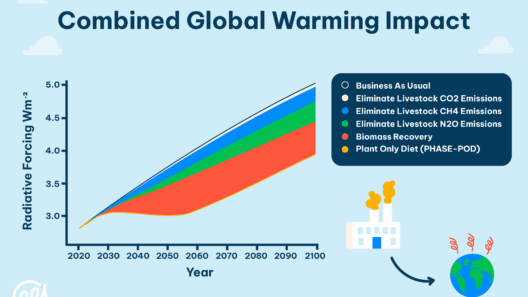The phenomenon of climate change, with its multifaceted impacts and growing urgency, often elicits a sense of foreboding among individuals and communities alike. The discourse frequently oscillates between despair and optimism, highlighting the pivotal question: is a reversal of climate change possible? To explore this complex inquiry, we must first comprehend the intricate web of cause and effect that fuels our planet’s uncertain trajectory.
At its core, climate change is precipitated by an increase in greenhouse gas emissions, primarily carbon dioxide and methane. These gases act as insulators, trapping heat within the Earth’s atmosphere. The primary Anthroposphere contributors are industries, transportation, and agriculture, which collectively emit copious amounts of gas through combustion processes and land-use changes. Therefore, the eradication or significant reduction of these emissions is a crucial element in any discourse about reversing climate change.
It becomes imperative to shift perspectives on how we approach our relationship with the environment. Many believe that climate change is an insurmountable challenge; however, reframing it as an opportunity for innovation and sustainable development offers a fresh lens through which to view the crisis. This perspective shift is not merely a philosophical adjustment; it necessitates actionable strategies that can incite curiosity and drive change.
One promising approach is the integration of renewable energy sources such as solar, wind, and hydroelectric power into our energy matrices. Transitioning away from fossil fuels toward these sustainable alternatives not only mitigates emissions but also revitalizes economic sectors and creates job opportunities. Countries like Denmark and Germany have demonstrated that this transition is not only feasible but can also lead to energy independence and resilience against economic fluctuations in global fossil fuel markets.
Simultaneously, regenerative agriculture presents another avenue for reversing climate change. By altering farming practices to focus on soil health, biodiversity, and carbon sequestration, we can significantly reduce agricultural emissions. Techniques such as crop rotation, agroforestry, and organic farming can lead to sustainable land use while enhancing food security. This approach invites interest from both scientific communities and agricultural sectors, showcasing a practical measure that not only protects but enriches our ecosystems.
Equally vital is the role of technological innovation in addressing climate challenges. Carbon capture and storage (CCS) technology exemplifies how advancements can act as a bulwark against climate change. CCS involves capturing carbon emissions at their source, transporting them, and securely storing them underground. While the technology is in its nascent stages, its potential for large-scale implementation could revolutionize our approach to emissions management, serving as a bridge toward a sustainable future.
In conjunction with innovation, public policy plays an indispensable role. Governments must prioritize climate action through rigorous legislation and incentives that foster sustainable practices. Policies like carbon pricing, which levies a fee on carbon emissions, can encourage industries to innovate and reduce their carbon footprints. Furthermore, embodying the principles of environmental justice ensures that vulnerable communities are not disproportionately affected by climate policies, promoting inclusivity and equity in climate action.
Changing societal attitudes toward climate change is paramount. Education and awareness campaigns can kindle interest and engagement among the populace, inspiring collective action. Grassroots movements have proven effective in promoting climate awareness, mobilizing citizens for local, national, and international initiatives. The successful outcomes observed in these movements illustrate the power of community-led efforts in effecting systemic change and bolster the argument that a reversal of climate change is plausible, given sufficient mobilization and dedication.
However, the prospect of reversing climate change extends beyond technological and policy solutions; it is intrinsically linked to lifestyle transformations. Embracing minimalism, reducing waste, and advocating for sustainable consumption can halt the insatiable resource extraction and pollution that exacerbate our climatic troubles. Individual actions, while small in isolation, complement larger systemic shifts and underscore the significance of collective responsibility in the battle against climate change.
Reflection on cultural narratives surrounding climate change can also reveal avenues for reversal. Art, literature, and media have the power to shape public perceptions and inspire action. By weaving climate consciousness into the fabric of storytelling—be it through film, literature, or visual arts—we can cultivate a culture that values and strives for a sustainable coexistence with the environment.
Ultimately, the prospect of reversing climate change hinges on our ability to envision and enact a transformed society—one that champions sustainability, embraces innovation, and fosters an unyielding commitment to preserving our planet. While the challenges are formidable, the trajectories of evidence suggest that a shift toward a sustainable future is plausible. We must remain indefatigable in our pursuit of knowledge, innovation, and stewardship of the Earth. The question is not whether reversal is possible, but whether we are ready to take the necessary steps to forge a path toward that reality.
In conclusion, harnessing the potential for reversing climate change can indeed be realized through a multitude of efforts—renewable resources, innovative technology, effective policies, community engagement, and cultural shifts all serve as integral catalysts. The convergence of these strategies fosters a promising narrative: one where humanity not only survives but thrives in harmony with the planet, co-creating a resilient future for generations to come.







